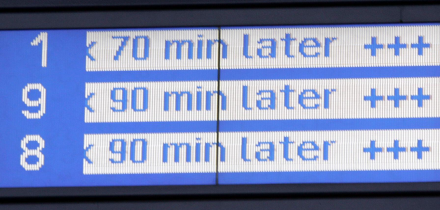For the MTN market, 2019 failed to live up to the promise of a busy 2018. Dealers looking to buck the trend of sliding volumes have had to be creative in order to provide investors with ways of extracting yield and issuers with diverse and esoteric sources of funding of the sort only available in private placement format.
Specialisation in a fragmenting market has helped some dealers dodge the overall decline in volumes, and climb the league tables. This year, Crédit Agricole increased its involvement in SSAs, up $2.2bn from last year, propelling the bank up to second in the SSA MTN league table as of the end of October, up from sixth in 2018. Deutsche Bank has climbed from 22nd in 2016 to fifth in 2019.
“The changes in league table positions are more about where you want to position your business and ensuring you remain flexible to lead the market in new directions,” says Crédit Agricole’s head of MTNs, Toby Croasdell.
But persuading issuers to look at MTNs is no easy task. At the end of October, overall third party MTN issuance was down 17% compared with last year at $160.9bn, according to Dealogic.
Martin Svedholm, a funding manager at Municipality Finance in Helsinki, attributes the decline to the illiquidity of MTNs and low interest rates. “This applies for all our private placements, as many investors are moving more and more to benchmarks with greater liquidity,” he says.
“Compared with the number of enquiries and prints from several years ago we are at very low levels. I think that the reason behind this is the extremely low yield environment. Investors are taking a while to get used to the new yield levels and tenors.”
Scandies surge upwards
Scandinavian banks have benefited from positioning themselves as alternative, local currency dealers for public sector issuers in Norway and Sweden.
Danske Bank has dealt almost $1bn more third-party MTNs in 2019 than it did in the same period in 2018, propelling it up six places to 11th. Meanwhile, Nordea climbed four places on the back of a $564.9m increase from 20th to 16th.
“The move of Scandie banks up the MTN league tables is to a large extent due to the growth of the Norwegian krone market,” says Gustav Landström, global head of SSA origination at Danske Bank in Stockholm.
SSA MTN issuance in Norwegian kroner has more than doubled during the first 10 months of 2019: $7.7bn equivalent sold across 106 deals, compared with $3.1bn in the same period in 2018.
Issuers have also noticed the sharp increase in Nokkie issuance. This year, the krone is the European Investment Bank’s fourth largest funding currency for the first time, having printed the equivalent of €1.8bn — twice as big as its previous record, according to Joakim Tiberg, a funding official at the EIB in Luxembourg.
“It has been a kind of perfect storm,” says Tiberg. “Looking at bond yields across markets, Norway is one of the few markets where yields are higher now than at the start of 2018.”
Rates have risen steadily over the past year as the Norges Bank has adopted a more hawkish tone, with the policy rate moving from a record low of 0.5% in August 2018 to 1.5% in September 2019.
Meeting the challenge of low rates
“Yields are underpinned at very low levels, and it doesn’t feel like that’s about to change,” says Croasdell.
“The challenge remains finding acceptable ways to extract more yield: this is clearly shown by the increase in callable and structured pay-offs seen in recent months and the extension of duration seen throughout the year.”
Issuers and investors are capitulating to the realities of low yields, and there have been stirrings at the long end in 2019. The Federal State of North Rhine Westphalia hit its first century maturity in March, before tapping the line a further 11 times, while SNCF and Ireland returned with their sophomore efforts.
Callable paper increased in the latter half of 2019, with $2.2bn printed during the third quarter, according to Dealogic.
Croasdell adds: “Public trades are being done at very competitive levels with minimal new issue premiums, so MTNs have to keep evolving, offering innovation and diversification. There’s a lot of liquidity out there, further fuelled by the ECB, that helps to drive supply in the public arena and the new issue market has been wide open for most borrowers.” GC






